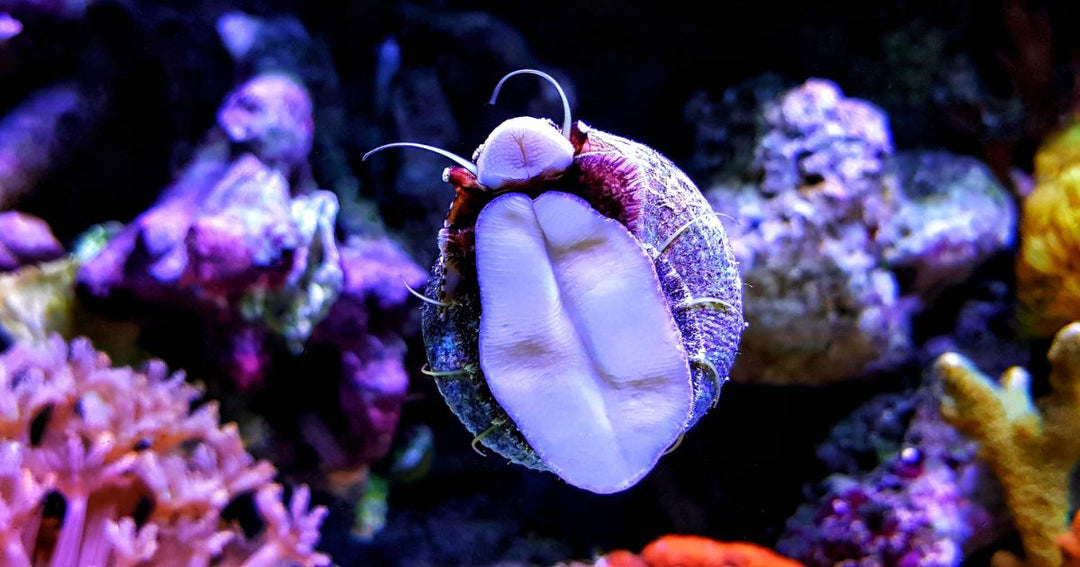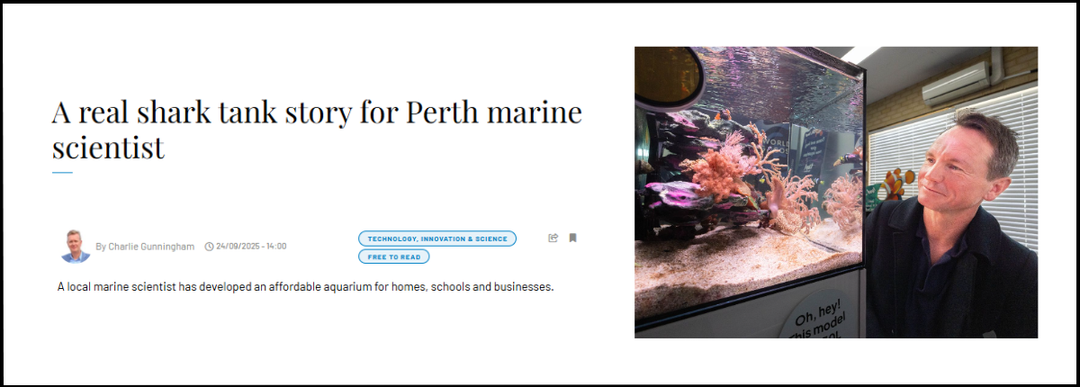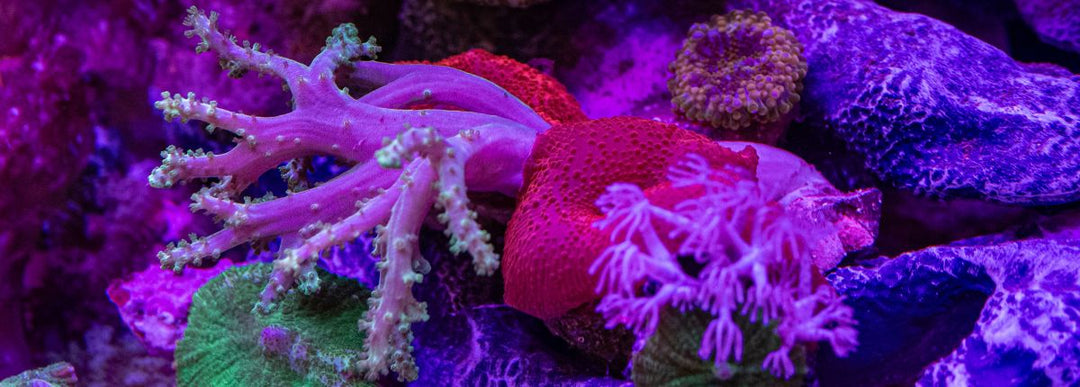An Aquarium for Every Home: Simplifying the Marine Aquarium Hobby

Introduction
People are naturally drawn to the beauty of marine aquariums, with their vibrant corals, exotic fish, and dynamic ecosystems. However, the complexity, cost, and maintenance required for traditional setups have made the hobby inaccessible to many. While experienced hobbyists may thrive, newcomers often face the overwhelming challenge of maintaining sensitive marine ecosystems with limited guidance or support.
The Living Ecosystem Aquarium is transforming this narrative. By leveraging natural ecosystem-based technologies, sustainable practices, and a focus on simplicity, Living Oceans has created a complete, low-maintenance solution that eliminates traditional barriers, ensuring success from day one. It is an aquarium for every home.
1. Water TreatmentProblem:
Conventional systems demand intricate and costly equipment such as protein skimmers, sumps, reactors, refugiums, dosing systems, and chillers to maintain the optimal water conditions for sensitive coral species. These setups are not only expensive but also difficult for most people to understand and maintain, often requiring a significant time investment.
Solution:
The Living Ecosystem Aquarium eliminates the need for complex water treatment systems. Its natural nutrient cycling processes, combined with carefully selected livestock, maintain low-to-moderate nutrient levels and the trace elements required by the livestock, without the need for skimmers, reactors, or dosing systems.
2. Startup Cycling
Problem:
Establishing the microbial populations required to break down fish waste and recycle nutrients from the start can be a difficult process to control. Hobbyists are often advised to introduce nutrient spikes, but depending on the method, this can lead to excessive nutrients, pests, and undesirable species. Uncontrolled cycling periods can take months to stabilise, causing frustration and are the highest risk point for hobbyists, often leading to failure.
Solution:
By using pre-cultured Living Sand and Living Blocks, the Living Ecosystem Aquarium eliminates the need for uncontrolled cycling periods. These substrates provide established microbial populations that immediately begin breaking down waste and recycling nutrients, ensuring a stable start without introducing pests or nutrient spikes.
3. Aquascaping
Problem:
Creating a stable reef structure with natural or artificial rocks is time-consuming, often requiring hours of gluing and assembly. Designing open structures for water flow, light penetration, and livestock hiding spots is challenging. Despite the effort, these structures often lack stability, with collapses risking livestock and disrupting the aquarium. Traditional reefs are also fixed, making transport or resale as an assembled unit nearly impossible.
Solution:
Living Blocks technology offers a game-changing approach to aquascaping. These modular reef structures are easy to assemble, providing stability, optimal water flow, and light penetration while offering hiding places for fish and corals. Unlike traditional aquascaping methods, Living Blocks are designed for transport and resale as a single unit, with corals still attached. Coral plugs allow for simple propagation and trading, enabling hobbyists to contribute to a sustainable coral aquaculture industry.

Fun Fact:
Coral fragments grown on Living Blocks can be traded or sold to other hobbyists, contributing to a sustainable coral aquaculture industry. Some rare coral species grown in home aquariums can fetch hundreds of dollars per fragment—your Living Ecosystem Aquarium could become a beautiful investment!
4. Livestock Selection
Problem:
Hobbyists are frequently sold fish, corals, or invertebrates that are unsuitable for their aquarium. This can lead to competition, feeding challenges, disease, or even the release of toxins that endanger both the aquarium inhabitants and the hobbyist. The lack of proper guidance on species compatibility often results in imbalances or loss, adding to the complexity and frustration of managing a marine aquarium.
Solution:
All fish, corals, and invertebrates are sustainably sourced and carefully chosen for their compatibility, adaptability, and resilience. This ensures that the aquarium remains balanced, disease-resistant, and easy to care for while eliminating the risks associated with incompatible species or wild-caught stock. See the Livestock Selection Blog Post to learn more.
5. Unsustainable Practices
Problem:
The reliance on wild-caught fish remains a significant challenge in the marine aquarium industry, with 98% of species sourced from pristine coral reefs. These unsustainable collection methods harm natural ecosystems, and the fish are rarely acclimatized for captive environments, leading to high mortality rates post-collection. This practice places unnecessary strain on wild populations and is increasingly viewed as unethical, with mounting regulation favoring sustainable collection and aquaculture practices.
Solution:
The Living Ecosystem Aquarium uses sustainably sourced fish and corals to reduce the pressure on natural reefs, provide healthier livestock better suited for captive conditions, and promote responsible practices within the marine aquarium industry.
6. Support and Training
Problem:
With the vast number of marine species sold globally in the aquarium industry—estimated at approximately 500 species, including around 210 fish species and 296 invertebrate species—store assistants often lack specialized knowledge about the species they sell. Without proper training or the ability to provide tailored follow-up support, customers are left to navigate the complexities of marine aquarium care on their own, increasing the likelihood of failure.
Solution:
Every element of the customer experience, from system design to livestock selection, online resources, training, and community access, is designed to optimize the conditions for thriving livestock. Living Oceans provides a 3-month Maintenance and Care Subscription with every purchase, including delivery, setup, and expert guidance. Ongoing support and warranties ensure peace of mind and long-term success.
7. Return on Investment
Problem:
After investing significant time and money, hobbyists are rarely given an exit strategy. If they choose to leave the hobby, move house, or face changing living circumstances, they are left with an aquarium system that has little resale value compared to their initial investment. This lack of flexibility often discourages individuals from continuing or entering the hobby altogether.
Solution:
The modular design of Living Blocks and the Living Ecosystem Aquarium ensures customers can easily transport, sell, or repurpose their established system, protecting their investment and making the hobby more accessible. As livestock grow and multiply, they can increase in value. Customers can grow and sell their own corals, contributing to a sustainable aquaculture industry while learning along the way. Corals can also be highly valuable, with some worth hundreds of dollars. Learning how to propagate and optimize their growth can generate financial returns for hobbyists, providing both education and tangible rewards.
Conclusion
The Living Ecosystem Aquarium is not just a product—it’s a solution to the longstanding challenges of the marine aquarium hobby. By addressing issues like uncontrolled cycling, complex maintenance, and incompatible livestock, Living Oceans has created a system that is simple, sustainable, and accessible to all.
This innovative approach has the potential to transform the marine aquarium industry, making it an enjoyable and rewarding experience for families, enthusiasts, and newcomers alike. Explore the Living Ecosystem Aquarium and discover how it’s shaping the future of marine aquarium keeping today.










